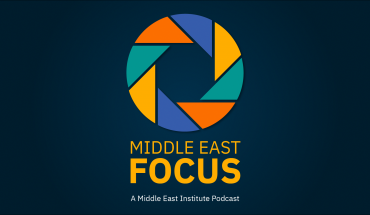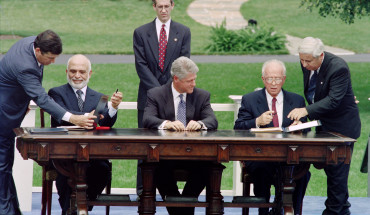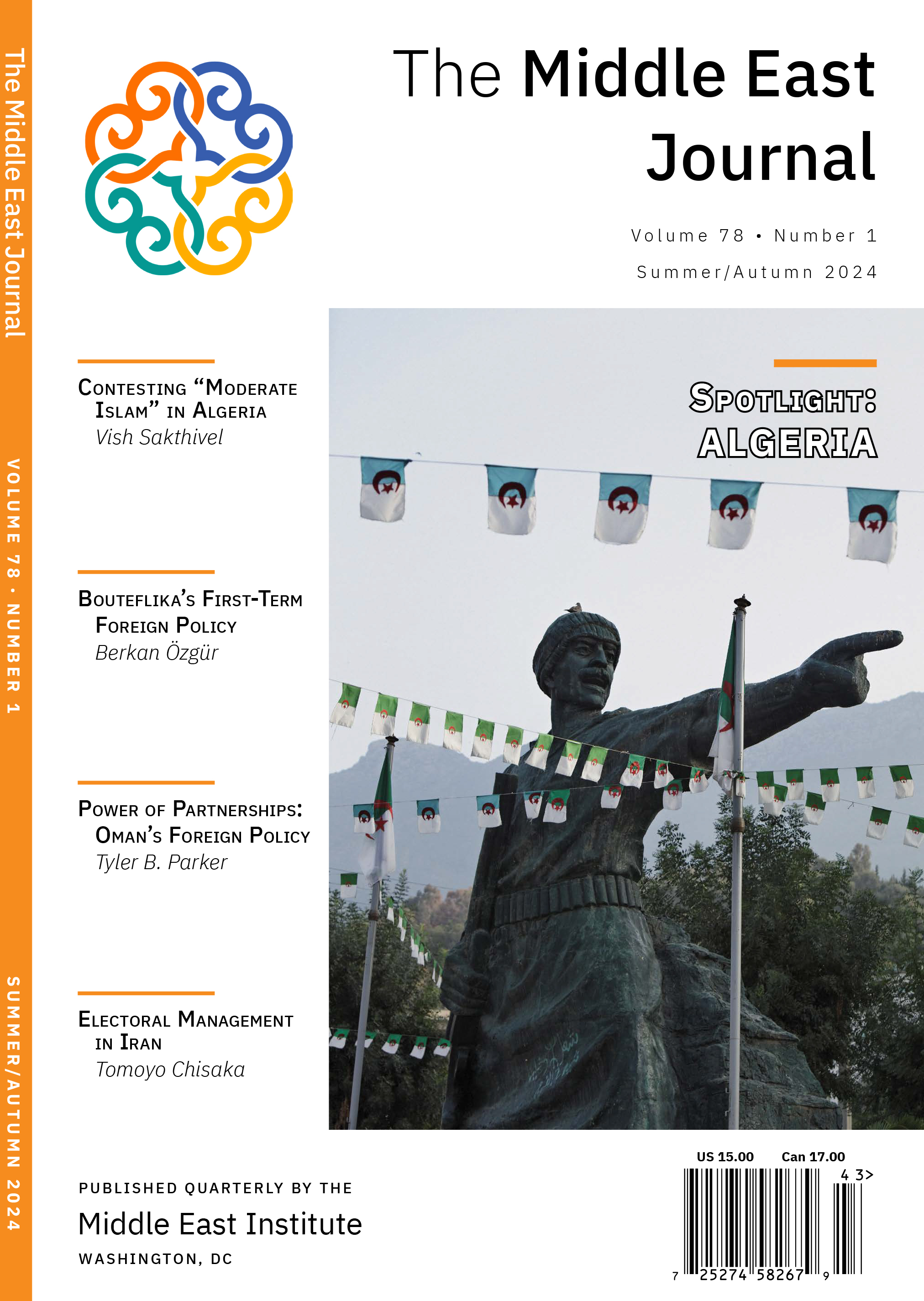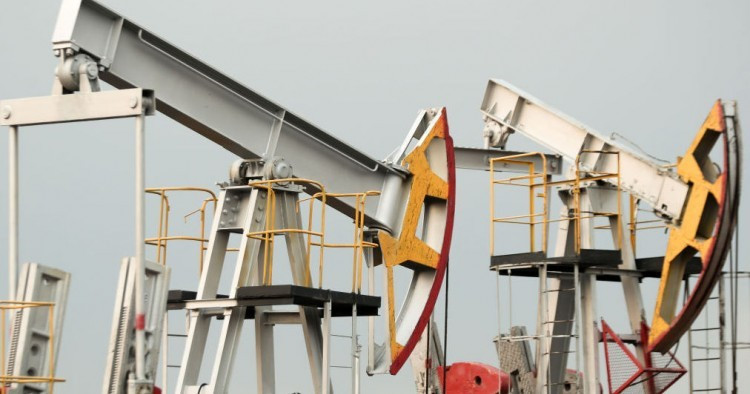This article is part of the series on “COVID-19 in the Middle East and Asia: Impacts and Responses”. Read more ...
The flow of crude oil from the Middle East to Asia has been chiefly responsible for the complex interdependence that has developed between the two regions over the past three decades and remains vital to the economies of both. Asia Pacific[1] — the world’s top oil importing region — sources most of its crude supplies from the Middle East, primarily from the Gulf.[2] Conversely, upwards of three-quarters of Gulf crude oil exports are shipped to Asian customers.
The coronavirus pandemic triggered a historic decline in global oil consumption, including a sharp downturn in Asian demand during the initial stages of the crisis — the first such contraction since the 2008 financial crisis. The twin shocks of low oil prices and the COVID-19 pandemic hit the Gulf countries hard. However, oil prices have recently risen to pre-pandemic highs, boosted by signs that the global economy may be recovering faster than expected and by OPEC+ supply restraint.
In April, the International Energy Agency (IEA) raised its forecast for oil demand growth in 2021, saying that “fundamentals look decidedly stronger” but warned of “lingering concerns.”[3] Against the backdrop of the IEA’s assessment and other, similar projections,[4] this article looks at how Gulf-Asia oil relations have fared during the pandemic and at their near- and longer-term prospects.
The COVID-19 pandemic dented Asian oil demand and disrupted Gulf oil-exporting countries’ economies, but it did not damage the structural underpinnings of Gulf-Asia economic interdependence. As the fragile global economic recovery proceeds, players on both sides of this complex interregional relationship will have to adjust to new and familiar downside risks and market uncertainties. Yet, even as the transition to clean energy gathers momentum and “peak oil demand” draws near, Middle East and Asia Pacific regional economies will remain tightly intertwined and their fortunes tied to oil.
Asia Pacific Oil Demand and Middle East Producers in Pandemic Times
Asia Pacific oil demand has expanded rapidly in recent years. [See Figure 1.] So, too, has Asia’s oil import dependence. Although Asian countries consume about 35% of the world’s oil, they produce only a little more than a fifth of the volume needed to meet their growing requirements. China and India are the world’s top two net oil-importing countries,[5] and key drivers of incremental oil demand growth. China’s crude oil imports climbed 7.3% last year, accounting for nearly 80% of the country’s oil supplies.[6] India’s dependence on imported crude, which has been rising, currently stands at around 75%.[7]
Figure 1. Crude Oil Consumption by Region (in KBD) Source: BP Statistical Review of World Energy, 2020.
Source: BP Statistical Review of World Energy, 2020.
The COVID-19 pandemic and ensuing lockdowns depressed oil consumption and exerted downward pressure on oil prices. It also applied the brakes to Asian oil demand growth. In turn, this pandemic-induced oil market turmoil disrupted the economies of the Gulf sub-region, further damaging their fiscal and external positions. During 2014–18, most Gulf Cooperation Council (GCC) countries already had been running overall fiscal deficits that required increased borrowing and/or the drawing down of central bank and sovereign wealth fund (SWF) assets.[8] GCC economies had experienced a substantial slowdown in growth in 2019 as well. In contrast, the UNDP described Iraq’s macroeconomic and fiscal situation from 2017 to 2019 as “broadly positive … though structural challenges remained.”[9]
Last year, according to the IEA, GCC countries’ net income from oil and gas fell by more than half[10] while Iraq recorded its lowest annual export volume and worst oil revenue total in a decade.[11] In addition to pushing oil prices downward, the economic fallout from COVID-19 has damaged critical non-oil industries in the GCC states including tourism, real estate, construction, transport, and logistics. It has also made urgently needed economic diversification policies even harder to execute.[12] In the case of Iraq, oil price volatility and the pandemic reversed two years of steady growth and placed severe pressure on government finances.[13]
China, which staged a strong economic recovery after being hit hard early last year, was one of the few bright spots for oil demand in a year in which global consumption plummeted.[14] The Chinese economy’s return to positive growth led oil imports to surge 7.3% for the year.[15] Elsewhere across Asia, the economic recovery has been uneven, as has oil demand and oil imports volumes.[16] Japanese oil imports plunged 25% in May 2020 year-on-year before beginning to claw their way back to pre-pandemic levels.[17] India’s oil imports fell precipitously in the early months of the pandemic before turning sharply upward towards the end of last year.[18] Overall, Asia Pacific oil demand — with China carrying much of the load in steadying the market — acted as a bulwark against faltering demand in other markets, thereby mitigating the pandemic-induced damage to the economies of Middle East oil-exporting countries. Asia Pacific was also the focal point of a fierce battle for market share that began last March, with Saudi Arabia offering discounted official selling prices (OSPs) for Asian customers and with Iraq, Kuwait, and UAE immediately following suit.[19]
Gulf-Asia Pacific Oil Ties in a Post-Pandemic Future
Gulf producers’ successful transition to a post-oil future depends on revenues generated by oil and gas exports. Some economic activities — ranging from infrastructure development and construction to spending from neighboring countries — are supported by oil and gas revenues.[20] Therefore, GCC countries’ post-oil era future remains tied to hydrocarbons in the “twilight years” of the oil era. So, too, in the case of Iraq. In turn, that future is tied to continued strong Asian oil (and gas) demand.
According to the IEA’s recent analysis and forecast for oil, Asia Pacific is expected to provide 90% of global demand growth between 2019-26.[21] The report goes on to say that whereas OECD demand will stagnate and may even decline at the end of the forecast period, the fastest recovery will occur in non-OECD Asia.[22]
It is all but certain that Gulf producers will continue to be major sources of global supply for many years to come as they, along with Russia, form the backbone of the OPEC+ group of nations that account for more than half the world’s oil production. Middle East producers — led by heavyweights Saudi Arabia, Iraq, and UAE — are expected to provide half the increase in supply over the IEA’s outlook period.[23] For this reason, it is very likely that Gulf producers will remain core providers of crude oil to the Asia Pacific even as buyers turn to spot oil from Africa and North America as a hedge against disruption and as a means to secure cheap barrels to boost their margins. In brief, oil-guzzling Asian economies will remain tethered to Middle East producers and the other way around.
Lingering Downside Risks
Although Gulf-Asia crude oil-centered interdependence is here to stay for the foreseeable future and Asia Pacific oil demand will undoubtedly play an outsized role in the economic recovery and fortunes of Middle East oil-exporting countries, the near-term outlook is nonetheless clouded with uncertainty. Four risk factors stand out:
- India’s Coronavirus resurgence: The COVID19 lockdowns that began in 2020 have persisted as many countries continue to grapple with multiple waves of the coronavirus and slow vaccine rollouts. Much of Asia has succeeded in curbing the outbreak of COVID-19 relatively effectively, and may be on the path to recovery from the pandemic’s damaging economic effects. But darkening the outlook for a global economic rebound to boost oil demand is the situation in India, whose alarmingly high rate of coronavirus infections has threatened its economic and oil demand comeback.[24]
- Iran’s return to the market: Iran, which is primed to return to the market, remains a wild card.[25] Whether and when sanctions will be eased is unclear. If Iran returns to compliance with the original terms of the Joint Comprehensive Plan of Action (JCPOA), it could rapidly ramp up production. Some market analysts argue that Iran’s reentry might destabilize oil markets, and warn of increase price volatility.[26] Others, however, contend that because Iranian oil was never completely removed from the market — thanks largely to sales to China[27] — additional Iranian barrels would neither derail markets nor result in dramatically reduce prices.[28]
- Producer-consumer divergences: The divergence of interests between producers and consumers has caused some turbulence in Asia Pacific-Gulf oil markets, specifically between Saudi Arabia and India. Saudi Aramco, the kingdom’s state oil company, raised the official selling price (OSP) of its oil for Asia while cutting it for Europe and American markets, igniting a spat with India. In response, Indian oil ministry officials reportedly ordered state refiners to reduce reduce their orders for Saudi crude in May and urged them jointly negotiate with oil producers to get better deals and speed efforts to diversify sources of supply. When Saudi Arabia responded by cutting its prices for Asian buyers, Indian refinrers then ordered their regular volumes of Saudi crude for June.[29] However, the sparring over what constitutes a fair price is likely to continue, underscoring that mutual dependency cannot prevent serious disagreements between importers and exporters.
- Heightened geopolitical tension: As oil markets battle the cross-currents between signs of economic recovery and a resurgence of coronovirus cases, geopolitical risk is on the rise. Any one of a number of possible Middle East scenarios could disrupt fragile oil markets, ranging from an intensification of Iran’s “shadow war” with Israel to a repetition of the recent drone attacks on Saudi Aramco facilities.[30] By threatening to cause, or by actually triggering supply disruptions and contributing to price volatility, escalating geopolitical risk could stymie Asia’s delicate recovery and place further fiscal strain on Gulf producers.
In addition to these near-term downside risks in crude oil markets, there is market uncertainty in the petrochemicals sub-sector.[31]
Downstream Market Uncertainty
Petrochemicals have rapidly become the strongest driver of world oil demand.[32] In recent years, fast-growing emerging petrochem markets such as China have flourished, as have Middle East (and North American) companies. Their success has largely been attributable to feedstock advantages relative to their competitors and to healthy demand growth, particularly from Asia. The majority of the planned and announced petrochemical plants scheduled to come online over the next few years are located in the Middle East and Asia Pacific.[33]
Middle East petrochem producers have built an enormous and highly profitable industry by capturing the gas associated with oil production and using it as low-priced feedstock for chemical manufacturing. Over the last decade, they have been working to expand the domestic petrochemical sector, while increasingly investing directly in emerging markets to establish downstream outlets for their crude oil. They have focused on integrating petrochemical complexes and refineries (i.e., crude oil-to-chemicals, or COTC) both to better monetize their oil assets and to convert a greater percentage per barrel of oil to to higher-value chemical products in light of forecasts of a gradual slowdown and the eventual decline of transportation fuel demand.[34]
Fast-growing Asian markets have figured prominently in Middle East producers’ past successes — and in their future plans. Asia Pacific is the largest regional market for Middle East petrochemicals. Gulf producers have been counting on Asian demand growth, particularly in China and India — the former already the largest importer of downstream petrochemicals from the Middle East — to absorb the output from their downstream capacity additions.
Asia Pacific is also the leading destination for GCC petrochem production capacity investment.[35] Seeking to secure a bigger share of the Asian market, Middle East National Oil Companies (NOCs) — notably, Saudi Aramco, Abu Dhabi National Oil Co (ADNOC), and Kuwait Petroleum International — have been forging joint venture partnerships in the refining and petrochemicals sub-sectors in China, Malaysia, India, Vietnam, Indonesia, and South Korea.[36]
However, the COVID-19 pandemic, while having had an uneven demand-side impact across value chains, did trigger a general decline in demand and prices.[37] In turn, the sluggish market prompted petrochemical companies to announce project delays and to defer spending decisions as they scrutinize costs and adjust to receding margins.[38] Saudi Aramco and Saudi Basic Industries Corporation (SABIC) paused to reevaluate the scope of their planned COTC project at Yanbu.[39]
What does this period of reassessment signify or portend? By many accounts, the global petrochemicals market has entered a period of profound transformation, shaped by overcapacity, shifts in end-user demand, changes in feedstock dynamics, and a strong push toward sustainability. Does the future of oil lie in chemicals, and not in fuel? If so, what is its time horizon? Which end-use sectors and specific geographies are likely to surge and which to struggle?[40] Some argue that Asia’s petrochemicals industry will continue its pre-pandemic expansion as the region’s economies resume growth, driving demand.[41] There are those who regard petrochemicals as “the star performers of this decade” and claim that “moving into 2021, oil will be pulled more decisively into the Middle East-Asia nexus.”[42] Others, however, contend that lingering overcapacity is likely to lead to a sluggish post-pandemic rebound.[43] The picture is anything but clear.
Crude Oil Through a Greener Prism
What is clear, however, is that the transition to clean energy is gathering speed. The pandemic has prompted a reassessment of the role of oil and other fossil fuels, and appears to have accelerated the transition toward a low-carbon economy. The Chinese government has come to view carbon neutrality as an opportunity to create employment and sustain growth rather than as an economic burden. China,[44] Japan,[45] and South Korea,[46] which together account for 20% of world oil demand, all have announced carbon neutrality goals. Asia Pacific countries are promising markets for renewable energy.[47]
However, the patterns and the pace of the energy transition vary across Asia.[48] Not all governments are looking at the pandemic as an opportunity to accelerate the transition to green energy, but instead find themselves facing political and economic pressure to continue subsidizing the production and consumption of fossil fuels. Indeed, achieving net zero carbon targets by 2050 (in line with the 2015 Paris Accord on climate change) will be exceedingly difficult for China, Japan, and South Korea, as it will be for ASEAN Member States.
Oil will almost certainly remain an important part of the primary energy mix in Asia Pacific during what is bound to be an extended period of low carbon transition. Oil continues to have a strong grip over the transport sector. Although oil product use for power generation might present opportunities for substitution, retiring capacity takes time. Furthermore, oil demand growth will increasingly be for petrochemicals[49] even as fuel demand slows or declines. For the petrochemical industry remains the largest source of oil demand growth globally and specifically in the Asia Pacific,[50] and is likely to remain so even with the push towards recycling and away from single-use plastics. The pathway forward seems to be to deploy clean technologies such that oil can act as a bridge to a carbon-free energy future, rather than ruling out oil completely.
Conclusion
The global economic contraction driven by COVID-19 pandemic and the dramatic fall in prices in the early stages of the pandemic struck an unprecedented double blow to the economies of Middle East oil-exporting countries. The price of oil has gradually recovered to its pre-pandemic levels, while demand has been rising in parts of the world, particularly Asia. Although this is largely good news for Gulf producers, lingering near- and medium-term downside risks and market uncertainties persist.
The COVID-19 pandemic has altered the long-term outlook for oil. A general consensus appears to have emerged among energy majors, producers, and analysts that the coronavirus pandemic has accelerated the transition to a post-peak oil demand future. When will peak oil demand be reached? Was 2019 the high-water mark? The most recent edition of BP’s Energy Outlook, released last September, presents three scenarios for oil demand, all of which depict demand already on a downward slope. According to Rystad Energy’s long-term prognosis, peak demand in 2028 is the most likely outcome.[51] McKinsey (2033),[52] BloombergNEF,[53] Wood Mackenzie (2035),[54] and OPEC (2040)[55] have all brought forward their forecasts for when the world’s demand for oil may peak.
In addition to disagreement about the timing and shape of the oil-demand plateau, there is of course great uncertainty regarding whether, much less how quickly, the pandemic might permanently transform individuals’ behavior and societal priorities. Yet, two things seem clear: massive changes in the energy economy will not occur overnight, and in the meantime, sustained demand will be driven by Asia Pacific markets and fed by Middle Eastern oil.
[1] Asia Pacific includes China, India, Japan, South Korea, the ten members of the Association of Southeast Asian Nations (ASEAN), Australia, and New Zealand.
[2] For purposes of this article, the terms “Middle East” and “Gulf” are used interchangeably, specifically with reference to the six Gulf Cooperation Council (GCC) countries plus Iraq, unless otherwise noted.
[3] International Energy Agency (IEA), Oil Market Report – March 2021, https://www.iea.org/reports/oil-market-report-march-2021.
[4] Organization of Petroleum Exporting Countries (OPEC), OPEC Monthly Oil Market Report, April 2021, https://momr.opec.org/pdf-download/res/pdf_delivery_momr.php?secToken2=8293a200eec4206fe8866360b7bb2719bc71b851.
[5] IEA, “Oil, gas and coal dependency in China, 2007-2019,” updated December 18, 2020, https://www.iea.org/data-and-statistics/charts/oil-gas-and-coal-import-dependency-in-china-2007-2019.
[6] Michael Lelyveld, “China’s Energy Security Fears Slow Climate Drive,” Radio Free Asia, March 26, 2021, https://www.rfa.org/english/commentaries/energy_watch/coal-03262021095234.html.
[7] IEA, India Energy Outlook 2021, February 2021, 36, https://webstore.iea.org/download/direct/4287.
[8] Tokhir N. Mirzoev, et al., “The Future of Oil and Fiscal Sustainability in the GCC Region,” IMF, Departmental Paper no. 20/01, February 6, 2020, 11, https://www.imf.org/en/Publications/Departmental-Papers-Policy-Papers/Issues/2020/01/31/The-Future-of-Oil-and-Fiscal-Sustainability-in-the-GCC-Region-48934.
[9] United Nations Development Programme (UNDP), UNDP – Impact of COVID-19 on the Iraqi Economy, October 2020, 4, https://reliefweb.int/sites/reliefweb.int/files/resources/UNDP%2520Iraq%2C%2520Impact%2520of%2520Covid-19%2520on%2520the%2520Iraqi%2520Economy%2520FINAL_web.pdf.
[10] IEA, India Energy Outlook 2021, February 2021, 209-210, https://webstore.iea.org/download/direct/4287.
[11] Ben Lando, “Iraq oil exports and revenue up in December, but down year-on-year,” Iraq Oil Report, January 5, 2021, https://www.iraqoilreport.com/news/iraq-oil-exports-and-revenue-up-in-december-but-down-year-on-year-43445/.
[12] “GCC Establish economic diversification amid Covid-19,” International Finance, March 31, 2021, https://internationalfinance.com/gcc-establish-economic-diversification-amid-covid-19/.
[13] World Bank, “Iraq’s Economic Outlook – April 2021,” https://thedocs.worldbank.org/en/doc/866ae3150fd383da11ade2640546e17f-0280012021/original/6-mpo-sm21-iraq-irq-kcm2.pdf.
[14] US Energy Information Agency (EIA), “EIA estimates that global petroleum liquids consumption dropped 9% in 2020,” January 29, 2021, https://www.eia.gov/todayinenergy/detail.php?id=46596#:~:text=The%20U.S.%20Energy%20Information%20Administration,that%20dates%20back%20to%201980.
[15] Muyu Xu and Chen Aizhu, “China's 2020 crude oil imports hit record on stockpiling, new refineries,” Reuters, January 13, 2021, https://www.reuters.com/article/china-economy-trade-crude/update-1-chinas-2020-crude-oil-imports-hit-record-on-stockpiling-new-refineries-idUSL1N2JP07X; and Sambit Mohanty and Ratnajyoti Dutta, “After nearly 20 years, India's oil demand seen slipping into the red,” S&P Global Platts, August 6, 2020, https://www.spglobal.com/platts/en/market-insights/latest-news/oil/080620-after-nearly-20-years-indias-oil-demand-seen-slipping-into-the-red.
[16] World Bank, “World Bank East Asia and Pacific Economic Update, April 2021: Uneven Recovery,” April 2021, https://openknowledge.worldbank.org/bitstream/handle/10986/35272/9781464817021.pdf?sequence=2&isAllowed=y.
[17] “Japan’s energy imports fall to multi-year lows in pandemic year,” Hellenic Shipping News, January 25, 2021, https://www.hellenicshippingnews.com/japans-energy-imports-fall-to-multi-year-lows-in-pandemic-year/.
[18] Nidhi Verma, “India's oil imports at near three-year high in December – trade,” Reuters, January 20, 2021, https://www.reuters.com/article/india-oil/indias-oil-imports-at-near-three-year-high-in-december-trade-idUSKBN29P11L.
[19] Florence Tan and Chen Aizhu, “Saudi Arabia and Russia in tight race to become China’s top oil supplier in 2020,” Reuters, November 20, 2020, https://www.reuters.com/article/china-oil-saudi-russia-int/saudi-arabia-and-russia-in-tight-race-to-become-chinas-top-oil-supplier-in-2020-idUSKBN2800H0; and “Saudi Arabia’s May 2020 OSPs for crude exports bode well for Asian refiners,” Wood Mackenzie, April 16, 2020, https://www.woodmac.com/press-releases/saudi-arabias-may-2020-osps-for-crude-exports-bode-well-for-asian-refiners/.
[20] Nader Kabbani and Nejla Ben Mimoune, “Economic diversification in the Gulf: Time to redouble efforts,” Brookings Institution, January 31, 2021, https://www.brookings.edu/research/economic-diversification-in-the-gulf-time-to-redouble-efforts/#footref-12.
[21] IEA, OIL 2021: Analysis and forecast to 2026, March 17, 2021, 41, https://webstore.iea.org/download/direct/4329.
[22] Ibid.
[23] Ibid., 50.
[24] Charles Kennedy, “Reinstated Lockdowns Threaten India’s Oil Demand,” OilPrice.com, April 21, 2021, https://oilprice.com/Latest-Energy-News/World-News/Reinstated-Lockdowns-Threaten-Indias-Oil-Demand-Recovery.html; and Debjit Chakraborty and Saket Sundria, “Oil Demand in India to Buckle as Covid Surge Wreaks Havoc,” Bloomberg, April 23, 2021, https://www.bloomberg.com/news/articles/2021-04-23/india-s-covid-crisis-saps-fuel-demand-in-warning-to-oil-recovery; and Vrishti Beniwal, “World’s Fastest Recovery Outlook at Risk as Virus Hits India, Bloomberg, April 24, 2021, https://www.bloomberg.com/news/articles/2021-04-24/world-s-fastest-recovery-outlook-at-risk-as-virus-sweeps-india.
[25] IEA, OIL 2021, 70-71.
[26] Sharon Cho, “A Key Oil Spread Points to Price War Erupting as Suplly Expands,” Bloomberg, April 12, 2021, https://www.bnnbloomberg.ca/a-key-oil-spread-points-to-price-war-erupting-as-supply-expands-1.1589367.
[27] Brendan Hong, “China is still brimming with Iranian oil,” Atlantic Council, February 10, 2021, https://www.atlanticcouncil.org/blogs/iransource/china-is-still-brimming-with-iranian-oil/; and Dalga Khatinoglu, “India Oil Shipments To China Rebrnaded In Malaysia To Circumvent Sanctions,” Radio Farda, June 15, 2020, https://en.radiofarda.com/a/iranian-oil-shipments-to-china-rebranded-in-malaysia-to-circumvent-sanctions-/30671970.html.
[28] “Why Iran’s Threat to Markts Isn’t a Major Threat,” Markets Insider, April 18, 2021, https://markets.businessinsider.com/news/stocks/why-irans-return-to-oil-markets-isnt-a-major-threat-1030315277; and “Rebound in Iranian exports unlikely to shock oil markets -Goldman Sachs,” Reuters, April 6, 2021.
[29] Debjit Chakraborty, “Saudi Oil Hawkishness Speeds India Plan to Seek Alternatives,” Bloomberg, March 9, 2021; Nidhi Verma, “India asks refiners to diversify, cut reliance on Middle East oil after OPEC+ decision,” Reuters, March 9, 2021, https://www.reuters.com/article/india-oil/india-asks-refiners-to-diversify-cut-reliance-on-middle-east-oil-after-opec-decision-idUSKBN2B117P?rpc=401&; Nidhi Verma and Ahmad Ghaddar, “India refiners deepen cuts to saudi oil purchases in May – sources,” Reuters, April 6, 2021, https://www.reuters.com/article/uk-india-saudi-oil-exclusive-idUSKBN2BS1S5; Irina Slav, “India Ramps Up Oil Imports From Saudi Arabia After Price Cut,” OilPrice.com, May 7, 2021, https://oilprice.com/Latest-Energy-News/World-News/India-Ramps-Up-Oil-I….
[30] Katie McQue and Andy Critchlow, “Saudi Arabia says Ras Tanura oil export hub undamaged by Houthi attack,” S&P Global Platts, March 7, 2021, https://www.spglobal.com/platts/en/market-insights/latest-news/oil/030721-saudi-arabia-says-ras-tanura-oil-export-hub-undamaged-by-houthi-attack; and Katie McQue and Herman Wang, “Saudi Aramco facilities reportedly targeted by Houthui missile bombardment,” S&P Global Platts, March 7, 2021, https://www.spglobal.com/platts/en/market-insights/latest-news/oil/030721-saudi-aramco-facilities-reportedly-targeted-by-houthi-missile-bombardment.
[31] “The Future of Oil in the Post-Covid World,” GEP, August 20, 2020, https://www.gep.com/blog/mind/the-future-of-oil-and-gas-in-the-post-covid-19-world.
[32] IEA, The Future of Petrochemicals: Towards a more sustainable chemicals industry, October 2018, https://www.iea.org/reports/the-future-of-petrochemicals.
[33] Felix Todd, “Asia to account for half of global petrochemical capacity additions by 2030,” NS Energy, March 21, 2019, https://www.nsenergybusiness.com/news/asia-petrochemical-capacity-additions-2030/.
[34] “Crude Oil-to-Chemicals,” Future Bridge, December 24, 2019, https://www.futurebridge.com/blog/crude-oil-to-chemicals-future-of-refinery/.
[35] “The GCC Chemical and Petrochemical Industry: Facts and Figures 2017,” Gulf Chemicals & Petrochemicals Association (GCPA), January 2019, https://gpca.org.ae/wp-content/uploads/2019/01/Facts-and-Figures-2017.pdf.
[36] Rania El Gamal, “Exclusive: Saudi Aramco eyes partnerships as it expands refining, petrochems,” Reuters, June 12, 2018, https://www.reuters.com/article/us-saudi-aramco-downstream-exclusive/exclusive-saudi-aramco-eyes-partnerships-as-it-expands-refining-petrochems-idUSKBN1J81M9; and Robert Brelsford, “Kuwait advances expansion of Al-Zour integrated refining complex,” Oil & Gas Journal, July 26, 2019, https://www.ogj.com/refining-processing/article/14036945/kuwait-advances-expansion-of-alzour-integrated-refining-complex.
[37] Divy Malik et al., “The impact of COVID-19 on the petrochemical industry,” McKinsey, October 28, 2020, https://www.mckinsey.com/industries/chemicals/our-insights/the-impact-o….
[38] “Middle East petrochemicals consolidations pick up pace,” Argus, June 12, 2020, https://www.argusmedia.com/en/news/2113851-middle-east-petrochemical-consolidations-pick-up-pace.
[39] Kate Lee, “Aramco, Sabic rethink Saudi crude-to-chemical plans,” Argus, October 19, 2020, https://www.argusmedia.com/en/news/2151288-aramco-sabic-rethink-saudi-c….
[40] Joe Brock, “Pandemic exposes cracks in majors’ bet on plastic,” Reuters, June 4, 2020, https://www.reuters.com/article/us-health-coronavirus-plastic-analysis/pandemic-exposes-cracks-in-oil-majors-bet-on-plastic-idUSKBN23B0UT.
[41] Cristian Blumm, “A bright future for petrochemical projects in Asia,” White & Case, April 21, 2021, https://www.whitecase.com/publications/article/bright-future-petrochemical-projects-asia.
[42] Paul Hicken and James Leech, “Commodities 2021: Middle East-Asia oil sectors to shape global refining revolution,” S&P Global Platts, December 21, 2020, https://www.spglobal.com/platts/en/market-insights/latest-news/petrochemicals/122120-commodities-2021-middle-east-asia-oil-sectors-to-shape-global-refining-revolution.
[43] Alexander Tullo, “Petrochemicals to slump post pandemic,” Chemical & Engineering News, March 17, 2021. https://cen.acs.org/business/petrochemicals/Petrochemicals-slump-post-pandemic/99/i10.
[44] Oceana Zhou and Kshitz Goliya,“China’s carbon neutral pledge signals turning point for fossil fuel markets,” S&P Global Platts, September 23, 2020, https://www.spglobal.com/platts/en/market-insights/latest-news/electric-power/092320-chinas-carbon-neutral-pledge-signals-turning-point-for-fossil-fuel-markets; and Eric Yep, “China’s long march to zero,” S&P Global Platts, December 10, 2020, https://www.spglobal.com/platts/en/market-insights/blogs/energy-transition/121020-china-zero-carbon-target-2060-emissions-fossil-fuels.
[45] Justin McCurry, “Japan will become carbon neutral by 2050, PM pledges,” The Guardian, October 26, 2020, https://www.theguardian.com/world/2020/oct/26/japan-will-become-carbon-neutral-by-2050-pm-pledges.
[46] Isabelle Gerretsen, “South Korea formally commits to cutting emissions to net zero by 2050,” Climate Change News, October 28, 2020, https://www.climatechangenews.com/2020/10/28/south-korea-formally-commits-cutting-emissions-net-zero-2050/.
[47] Damon Evans, “Transition to renewable energy at risk in Asia Pacific,” Energy Voice, July 5, 2020, https://www.energyvoice.com/renewables-energy-transition/239815/transition-to-renewable-energy-at-risk-in-asia-pacific/.
[48] “Asia Pacific’s energy transition wiill be long-drawn out: S&P,” The Economic Times, April 21, 2021, https://energy.economictimes.indiatimes.com/news/coal/asia-pacifics-energy-transition-will-be-long-drawn-out-sp/82180737.
[49] Thousands of end use products are manufactured using petrochemicals, such as wind turbines, solar power panels, tires, detergents, furniture, cosmetics, medicines and medical devices, electronics, paints, thermal insulation, and plastics, among others.
[50] IEA, The Future of Petrochemicals: Towards a more sustainable chemical industry, 2019, https://www.iea.org/reports/the-future-of-petrochemicals.
[51] Rystad Energy, “Covid-19 and energy transition will expedite peak oil demand to 2028 and cut level to 102 million bpd,” Rystad Energy, November 2, 2020, https://www.rystadenergy.com/newsevents/news/press-releases/covid-19-and-energy-transition-will-expedite-peak-oil-demand-to-2028-and-cut-level-to-102-million-bpd/.
[52] “Global supply-and-demand outlook to 2040,” McKinsey, February 26, 2021, https://www.mckinsey.com/industries/oil-and-gas/our-insights/global-oil-supply-and-demand-outlook-to-2040.
[53] “New Energy Outlook 2020,” Executive Summary, BloombergNEF, https://about.bnef.com/new-energy-outlook/#toc-download.
[54] Ed Crooks, “What coronavirus means for the enery transition,” Wood Mackenzie, September 29, 2020, https://www.woodmac.com/news/feature/what-the-coronavirus-means-for-the-energy-transition/#:~:text=In%20the%20Wood%20Mackenzie%20base,gasoline%20consumption%20starts%20to%20decline.&text=With%20high%20demand%20growth%2C%20driven,tighten%20as%20soon%20as%202024.
[55] OPEC, World Demand Outlook 2045, Ch. 3, https://woo.opec.org/chapter.php?chapterNr=101.
The Middle East Institute (MEI) is an independent, non-partisan, non-for-profit, educational organization. It does not engage in advocacy and its scholars’ opinions are their own. MEI welcomes financial donations, but retains sole editorial control over its work and its publications reflect only the authors’ views. For a listing of MEI donors, please click here.












